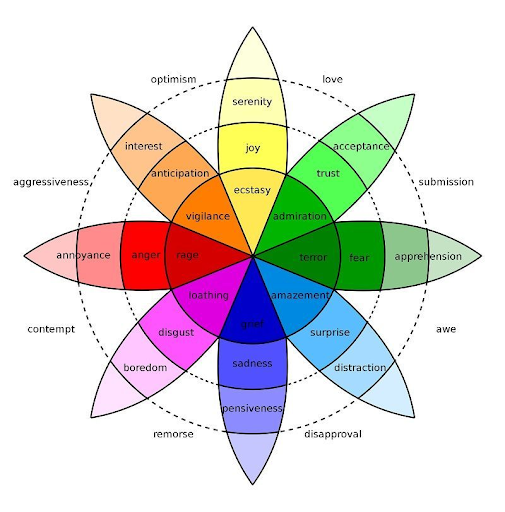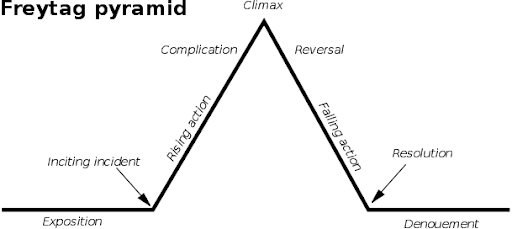Distance Learning: 5 Ways to Keep Engaging Your Audience
One of the challenges of effective learning design has always been around keeping learners engaged throughout their learning journeys. With learning now increasingly happening at distance, and without the benefits of face-to-face interactions in your learning blend, capturing and maintaining your learners’ attention has never been more important.
In this blog post, Victor Verster, learning designer at LEO Learning, gives us his views on distance learning. He explores five learning design methodologies that can be embraced to maintain learner engagement while delivering effective learning journeys at distance.
A Human-Centric Approach to Learning Design Is More Important Than Ever
The coronavirus pandemic emphasized the need for widespread, well-designed, and engaging distance learning, perhaps unlike anything else in history. We all depended on each other’s humanity and compassion more than ever before. It follows, then, that digital learning materials need to become more human-centric in tandem.
No doubt this presents learning designers with an opportunity to innovate, but it’s a unique challenge that we should respect. Many learners are crying out for interesting content, but for many, distractions at home have never been more visceral and well-being concerns have never been more prevalent.
Before we jump into creating digital learning content, therefore, I believe that we need to embrace the spirit of our age and take a step back for a moment. We must first reflect on what learning design actually is and what it entails. I’m reminded of this quote from the late, great, Steve Jobs: “Design isn’t just what it looks like and how it feels. Design is how it works.”
I also include a modified version of The Three Levels of Design Appeal, as originally advocated by design professor Don Norman:
- Visceral: I want to learn about this subject! It looks engaging.
- Behavioral: I can master this subject! Then I can do better at work.
- Reflective: I enjoyed that learning experience! Now I want to tell my colleagues about it.
So, to engage fully with learners during this period, we need to call on the expertise of various disciplines outside the traditional learning and development sphere that focus primarily on behavioral change.
RELATED READING | ‘The 6 Dos and Don'ts of Designing Distance Learning Content’
5 Ways to Create and Sustain Engagement in Distance Learning
As an example methodology, and with reference to industry experts and academics, here’s a five-point program for creating and sustaining user engagement in distance learning.
1. Align Your Design With How Our Brains Learn.
The interconnectedness between brain function and learner behavior cannot be overstated. For optimal cognitive retention, all lobes in both hemispheres of the brain should be involved in processing information.
In essence, this means it’s a good idea to create a wide variety of tasks for your learners—ones that enable learners to at least be expressive, receptive, rational, and emotional. So get them to create, process information, apply logic, and invest emotionally in your training.
This list is by no means exhaustive, but for example, a module could comprise the following learning events:
- A reflective task, such as filling in an action plan or workbook (Expressive)
- A bite-size digital tutorial (Receptive)
- An assessment where the learner needs to assess priorities and then make a decision (Rational)
- A snappy introductory video with a warm, reassuring message from a business’ CEO (Emotional)
According to Dr. Andre Vermeulen, CEO of Neuro-Link: “It’s becoming quite clear that organizations will do well by aligning offerings with natural brain functioning. Doing so will ultimately drive more sales, enhance wellness, and increase productivity.”
2. Apply a User Experience (UX) Mindset When Designing.
According to the Nielsen Norman Group, “UX encompasses all aspects of the end-user’s interaction with the company, its services, and its products.”
For the purposes of this article, we’ll focus on interaction with learning. At its essence, UX can be distilled into seven key components. We need to consider all of them when creating distance learning.

©Interactive Design Foundation
It would be impossible to list all of the UX factors you need to consider when designing distance training, but I believe these seven questions cover the main points:
- How is this training going to add value?
- How will this training improve the way people do their jobs?
- How easy is the training to navigate?
- Where will the learner find this training?
- How will SMEs review the training to ensure content veracity?
- How much do learners want to complete more training right now?
- How will learners with accessibility requirements complete the training?
And remember, UX principles continue to apply even after the learner completes that last task or receives their final summative quiz score. If you were a restaurant manager, for example, you wouldn’t suggest that a customer’s experience ends after they’ve eaten the last bite of their meal. This is because you know that the customer will probably talk to their friends about their experience, or perhaps post a review on a website. We shouldn’t treat our distanced learning solutions any differently. Here are some key questions to consider:
- What are the key takeaways from the training? To optimize engagement, they need to be eminently applicable to the user’s job.
- Who should the user talk to about the training and how? Is it their colleagues, their manager, their family? And via video call or a forum chat on an LMS?
- What should the learner do next? Keep your users hungry for content, and always leave them wanting more.
KEEP READING | ‘5 Ways Open LMS’s Personalized Learning Designer (PLD) Enhances Online Education’
3. Appeal to Learners’ Emotions
The COVID-19 pandemic ruptured the emotional connections we share with our families, friends, and loved ones. The risks we incurred during face-to-face contact and our duty to protect each other overode our individual desires. Connecting with your learner emotionally, therefore, is highly important at this point in history.
Stating upfront the training’s ‘what’s in it for me’ factor is advisable in various contexts, but perhaps particularly now, amidst a backdrop of increased individual skepticism and community tension. This could take the form of a snappy introductory animation that quickly summarizes the benefits the training will bring to the learner. In a climate where attention spans are perhaps lower than usual, engaging a user early is pivotal to achieving your objectives. Incorporating a reflective task into your learning campaign can offer your learner an appropriate emotional and creative outlet.
As emotional design is particularly pertinent to creating distance training, consider exploring the interrelation of human emotions using Robert Plutchik’s Wheel of Emotions.

©Robert Plutchik
A facilitator can still deliver virtual workshops with a human face. They could consider turning on their camera so that the learner can see them—even if it’s just for a moment or two, if they’re concerned about logistical/bandwidth issues. Alternatively, they can send personalized emails if the learner cohort is an appropriate size. This can instill a sense of trust within the learner. Teaser banner emails can create a sense of anticipation for upcoming tasks or assignments.
Be judicious, of course, with inserting learning events or details designed to surprise. They can easily distract from the core learning content if handled inappropriately. Seductive details might seem engaging at a superficial level, but ultimately they can inhibit learning.
4. Share Inspiring Stories
Storytelling is a key part of the human experience. Our ancestors told stories around fires and painted them on walls, Medieval balladeers traveled from village to village, passing on wisdom from the cities, and the contemporary hip hop artist tells stories of survival in impoverished conditions. The great thing about a story is that everyone has one to tell and everyone loves hearing them. As learning content creators, we can, and should, tap into this primal spring of inspiration.
The plot needs to advance tightly and efficiently. This doesn’t mean it has to be a heart-stopping roller coaster—in fact, in most cases it won’t be. But exposition and character development should be minimal. Always try to select the approach that communicates your learning messages accurately and consider the motivations of your learner group. What are their likes and dislikes? It can be really powerful to build on what the learner already knows.
For example, scenario-driven assessments can be really effective. Putting the learner in control of their character’s destiny offers them a sense of escapism that allows them to fail without fear of reprisal. I personally like to use Freytag’s Pyramid of dramatic structure as a guide to scaffold my stories. It’s not necessarily appropriate for all narratives, but it contains the skeleton of a great story.

©Gustav Freytag
5. Gamify Training in a Sociable Way
Most of us like to play games for a sense of enjoyment and escapism, and it seems like we’re playing more games than ever right now—and for longer periods. According to British game designer Richard Bartle, there are broadly four types of video game players: killers, achievers, socializers, and explorers.
We can conceive these player types in a quadrant model as such. The X-axis represents inclination for interacting with other players vs. exploring the game’s world and the Y-axis represents preference for collaboration vs. unilateral action.

©Richard Bartle
Bartle’s research found some intriguing results. Broadly speaking:
- ~80% of players are socializers
- ~10% are explorers
- ~10% are achievers
- ~1% are killers
We can use this to our advantage. The socializer loves to collaborate to achieve bigger and better things as part of a team than they could as an individual. Consider how cooperation with our neighbors and with key workers was at the forefront of public discourse during the pandemic. This perhaps goes some way to explaining why Animal Crossing, an eminently non-competitive game with social interaction at its core, broke all kinds of digital sales records.
Encourage your learners to collaborate to complete tasks via video platforms. The virtual pub quiz, with its familiar, low-fidelity summative assessment style, peaked in popularity during the pandemic. Nonetheless, it may still be a worthwhile format to return to when assessing your learner’s competence in a particular area while keeping the tone of delivery light. You can even record this as a webinar for your learners who can’t make the call due to other commitments.
You could also consider designing two different digital banked assessments to give to a pair of learners. While the content will be similar, the answers will be different. After answering each question correctly, the user unlocks a certain piece of a jigsaw puzzle, or maybe a token. The learners then need to communicate together to share the answers, puzzle pieces, tokens, etc. that they’ve received and complete the puzzle.
HANDPICKED FOR YOU | ‘Gamification in Education: How to Use It (With Examples)’
Conclusion
The pandemic created a sense of global solidarity like no other event in recent history. Keeping learners engaged while at a distance remains a huge challenge, but it’s not impossible. Only through learning and developing technologies will organizations continue to maintain productivity and engagement.
Here are five final key tips to take away from this article to keep your learners engaged:
- Offer your learners a variety of tasks to keep them motivated and their brains active, remaining courteous to neuroscience.
- Revise and iterate on your designs against the seven key UX principles: value, usefulness, usability, findability, credibility, desirability, and accessibility.
- Prioritize bite-sized content that elicits positive emotions from users.
- Hook your learners in with compelling stories light on exposition, heavy on action, and filled with layered characters.
- Harness the power of social gaming to get your learners talking to each other, solving problems, and refining their virtual teamwork skills.
Victor Verster is a lead learning designer for LEO Learning, where a version of this blog post originally appeared.